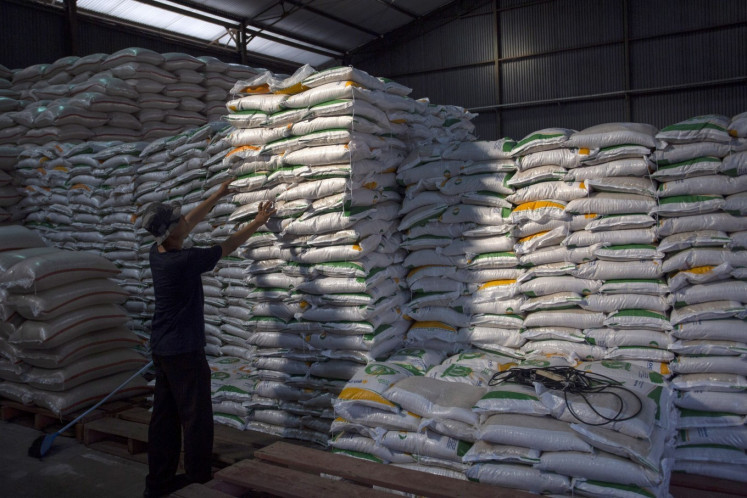Popular Reads
Top Results
Can't find what you're looking for?
View all search resultsPopular Reads
Top Results
Can't find what you're looking for?
View all search resultsAnalysis: Coal becoming a sunset industry
We recently attended a coal conference in Jakarta entitled “Indonesia Coal Price Trend and Market Outlook”, and our findings suggest that coal is indeed a sunset industry
Change text size
Gift Premium Articles
to Anyone
W
e recently attended a coal conference in Jakarta entitled “Indonesia Coal Price Trend and Market Outlook”, and our findings suggest that coal is indeed a sunset industry.
Director of coal business development at the Energy and Mineral Resources Ministry, Edi Prasodjo (keynote speaker), stated that the current low coal prices were mainly due to a global oversupply condition, spurred by numerous mining exploitations in the past three to four years due to attractive coal prices.
Indonesia’s coal production itself expanded from 217 million tons in 2007 to 353 million tons in 2011, nearly doubling in just 4 years, driven primarily by exports (exhibit 1). Edi also commented that current low prices are challenging for Indonesian small-to-medium coal companies with some of them having stopped production.
Hence, the ministry estimated 2012 national production to fall to 332 million tons, down 6 percent year-on-year (y-y). With the total production volume reaching 215 million tons in the first seven months, this year, the ministry expects further deceleration in the remaining months of 2012. We also note that the ministry believes that coal production will stay below the 2011 level through 2014, suggesting continued difficult operating condition (exhibit 1).
A topic that emerged during the conference was whether the government plans to cap national coal production to mitigate the current oversupply condition. This is unlikely to occur in the short term, according to Edi, due to importance of coal in the state budget with 2011 non-tax state revenue of coal amounting to Rp 20.8 trillion, up from Rp 5.8 trillion in 2007.
At the conference we learned an interesting development within the global coal space. According to a coal company, there are US manufacturers that are starting to pull back production from China to the US on the back of lower production costs helped by the availability of cheap shale gas.
This coupled with the eventual repair of China’s railway problem and other technological advancement such as HVDC cable will pose longer term uncertainties on the fundamentals of coal.
Hence, Bahana adopts a different view on world coal outlook compared to a Mackenzie keynote speaker, in which he stated that longer-term coal fundamentals would remain intact with main demand coming from China and India. Mackenzie believes that Chinese coal imports are mainly driven by coal price arbitrage between domestic and international coal prices.
Testimony to this was higher coal imports in the first eight months of this year (+44 percent y-y, exhibit 2), although we note volumes had been on the decline in the past two months with August volumes just up a paltry 4 percent y-y. In 2013, Mackenzie also expects China’s coal imports to grow 11 percent y-y to 250 million tons, before further increasing to 500 million tons in 2020 on higher demand.
In India, coal imports are expected to almost double from the current 100 million tons to nearly 200 million tons in 2020 caused by infrastructure bottleneck (India’s power plants are mainly concentrated in Western, Southern and Northern India, while production is based in Eastern India).
However, we note that Mackenzie does not see much coal price improvement through 2013 from current levels.
While there have been some signs of supply response to the current low coal price, we believe upside potential on coal price remains limited due to weak coal demand. Hence, we maintain our 2012 average coal benchmark price at US$97 per ton, before falling to $85 per ton in 2013. We retain our underweight stance on coal’s sunset sector outlook.
The writer is an analyst at PT Bahana Securies.










